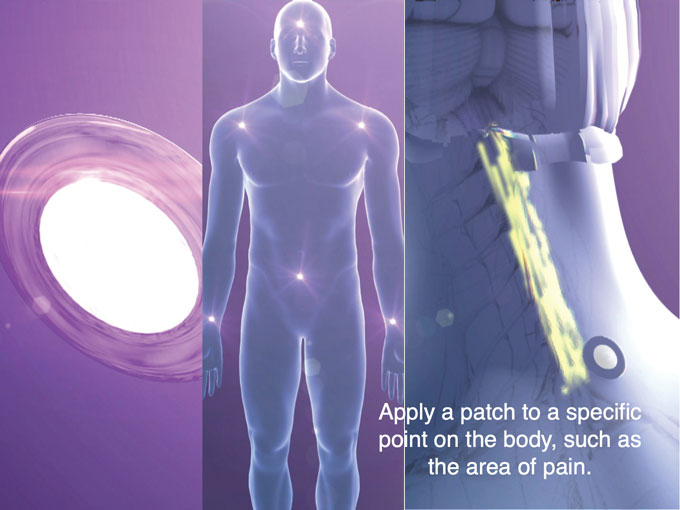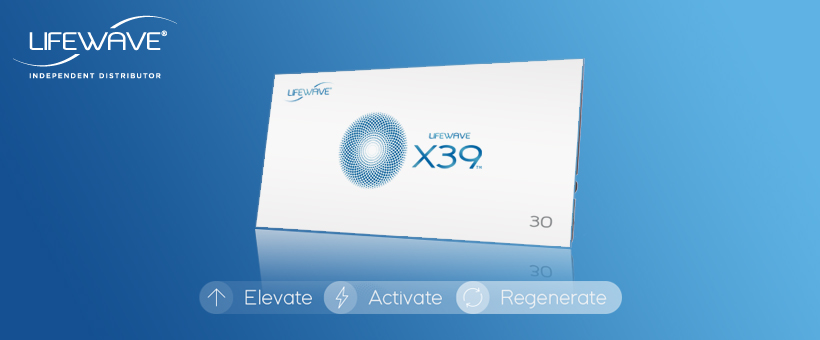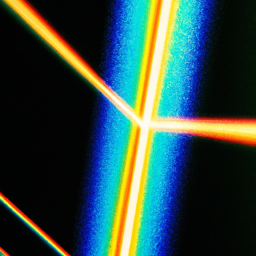In this article, you will gain a clear understanding of the differences between UVA and UVB phototherapy. If you’ve ever wondered which type of phototherapy is more effective for your skin condition or the potential risks involved, then look no further. By exploring the unique characteristics of UVA and UVB light, you will be empowered to make informed decisions about your treatment options. So, let’s shed some light on the distinctions between UVA and UVB phototherapy and discover the best approach for your skin.

Understanding UVA Phototherapy
Definition of UVA Phototherapy
UVA Phototherapy, also known as PUVA (Psoralen plus UVA) therapy, is a type of treatment that uses UVA light to manage various skin conditions. UVA light, with a wavelength between 320 and 400 nanometers, is a part of the ultraviolet (UV) spectrum. Unlike UVB light, UVA light is less likely to cause immediate sunburn but can deeply penetrate the skin layers, making it an effective treatment option.
How UVA Phototherapy Works
During UVA phototherapy, the patient is exposed to UVA light either from a specialized lamp or from a lightbox. The treatment may also involve the use of a medication called psoralen, which sensitizes the skin to UVA light. Psoralen can be taken orally or applied topically to the skin. When exposed to UVA light, psoralen activates and enhances the therapeutic effect of UVA radiation, making the treatment more effective.
Benefits of UVA Phototherapy
UVA phototherapy has proven to be beneficial in treating various skin conditions, including psoriasis, vitiligo, atopic dermatitis, and mycosis fungoides (a type of cutaneous T-cell lymphoma). It offers several advantages such as a high success rate, long remission periods, and the ability to target specific areas of the body. UVA phototherapy is non-invasive and generally well-tolerated by most patients.
Risks and Side Effects of UVA Phototherapy
While UVA phototherapy is generally safe, there are some potential risks and side effects to consider. Short-term side effects may include mild redness, itching, or dryness of the treated area. Long-term risks include premature aging of the skin and an increased risk of developing skin cancer. However, these risks are minimal when appropriate protective measures are taken and the treatment is professionally supervised.
Conditions Treated with UVA Phototherapy
UVA phototherapy is commonly used to manage various dermatological conditions. Psoriasis, a chronic autoimmune disease characterized by red, scaly patches on the skin, often responds well to UVA phototherapy. Vitiligo, a condition in which the skin loses its pigment, can also be treated with UVA phototherapy. Additionally, UVA phototherapy has shown promising results in reducing itchiness and inflammation associated with atopic dermatitis.
Understanding UVB Phototherapy
Definition of UVB Phototherapy
UVB phototherapy is a treatment technique that utilizes UVB light, specifically in the range of 290 to 320 nanometers, to treat a variety of skin conditions. UVB light is more energetic than UVA light and tends to be absorbed by the outer layers of the skin, making it an effective treatment option for certain skin disorders.
How UVB Phototherapy Works
UVB phototherapy involves exposing the affected skin to light from a specialized UVB lamp. This exposure stimulates the skin cells, helping to reduce inflammation, slow the production of excessive skin cells, and promote healing. The treatment is typically administered two to three times a week, with the duration and intensity of exposure gradually increasing over time.
Benefits of UVB Phototherapy
UVB phototherapy has been proven to effectively treat conditions such as psoriasis, eczema, vitiligo, and certain types of dermatitis. It offers several advantages, including high success rates, minimal side effects, and the ability to directly target affected areas. UVB phototherapy is a non-invasive and cost-effective treatment option that provides long-lasting results for many patients.
Risks and Side Effects of UVB Phototherapy
While UVB phototherapy is generally safe, there are potential risks and side effects to be aware of. Short-term side effects may include temporary redness, itching, or mild sunburn-like symptoms. Long-term risks include an increased risk of skin aging and, in rare cases, an increased risk of skin cancer. However, the benefits of UVB phototherapy often outweigh these risks, especially when managed by a healthcare professional.
Conditions Treated with UVB Phototherapy
UVB phototherapy is commonly used to treat various skin conditions. Psoriasis, a chronic autoimmune disease characterized by rapid skin cell production, responds particularly well to UVB phototherapy. UVB light can help slow down the excessive skin cell turnover and reduce the inflammation associated with psoriasis. UVB phototherapy is also effective in treating eczema, vitiligo, and certain types of dermatitis.
Differences in Wavelengths
Explanation of UVA Wavelength
UVA light has a longer wavelength of 320 to 400 nanometers compared to UVB light. Due to its longer wavelength, UVA light can penetrate the skin’s deeper layers, including the dermis. This ability to deeply penetrate the skin makes UVA phototherapy effective in treating conditions that originate in these deeper layers, such as mycosis fungoides.
Explanation of UVB Wavelength
UVB light has a shorter wavelength of 290 to 320 nanometers compared to UVA light. As a result, UVB light is primarily absorbed by the skin’s outer layers, the epidermis. This makes UVB phototherapy effective in treating conditions that primarily affect the superficial layers of the skin, such as psoriasis and vitiligo.
Effects of Different Wavelengths on the Skin
The different wavelengths of UVA and UVB light have varying effects on the skin. UVA light mainly contributes to the long-term effects of sun exposure, such as premature skin aging and an increased risk of skin cancer. UVB light, on the other hand, is responsible for the more immediate effects of sunburn and can also stimulate the production of vitamin D in the skin.
Which Wavelength is More Effective in Phototherapy
The effectiveness of UVA and UVB light in phototherapy depends on the specific condition being treated. UVA phototherapy is often favored for treating deeper skin conditions, while UVB phototherapy is more commonly used for superficial skin conditions. The decision between UVA and UVB phototherapy is best made in consultation with a dermatologist, who will consider the patient’s specific needs and the characteristics of their condition.
Range Penetration
UVA Penetration and Effects
UVA light can deeply penetrate the skin, reaching the dermis and affecting the cells and structures located there. This deep penetration makes UVA phototherapy effective in managing conditions that involve the deeper layers of the skin, such as mycosis fungoides. However, it is important to protect the eyes and cover any areas that do not require treatment to minimize potential risks.
UVB Penetration and Effects
UVB light primarily affects the superficial layers of the skin, particularly the epidermis. The shallow penetration of UVB light makes it beneficial for treating conditions that primarily affect the outermost layers of the skin, such as psoriasis. UVB light helps to slow down the rapid turnover of skin cells, reduce inflammation, and alleviate symptoms associated with certain skin disorders.
Comparison of Penetration Depth
When comparing UVA and UVB light, UVA light has a greater ability to penetrate deep into the skin layers. UVB light, on the other hand, is mainly absorbed by the epidermis. The difference in penetration depth is why UVA light is more effective for conditions that involve the deeper layers of the skin, while UVB light is preferred for conditions affecting the superficial layers.
Implications in Phototherapy
The difference in penetration depth between UVA and UVB light has important implications in phototherapy. Depending on the condition being treated, the dermatologist will determine if the deeper penetration of UVA light or the more superficial effect of UVB light is needed. By tailoring the treatment to target the specific layers affected, phototherapy can be optimized for each patient’s needs.

Time of Exposure
Recommended Exposure Time for UVA Phototherapy
The recommended time of exposure for UVA phototherapy varies depending on the specific condition being treated and the individual patient. In general, initial exposure times are shorter and gradually increase over the course of treatment. The dermatologist will closely monitor the patient’s response and adjust the exposure time accordingly, ensuring an optimal balance between effectiveness and safety.
Recommended Exposure Time for UVB Phototherapy
Similar to UVA phototherapy, the recommended exposure time for UVB phototherapy depends on the condition being treated and the patient’s response to the treatment. Initially, exposure times may be very brief and gradually increase as the treatment progresses. Dermatologists carefully monitor the patient’s skin response and adjust the exposure time and intensity accordingly to achieve the best therapeutic outcome.
Factors Affecting Exposure Time
Several factors can affect the recommended exposure time for both UVA and UVB phototherapy. These factors include the patient’s skin type, the severity of the condition being treated, the individual’s tolerance to the treatment, and any previous response to phototherapy. It is crucial to work closely with a dermatologist who will consider these factors and personalize the treatment plan for optimal results.
Adjusting Treatment Duration for Phototherapy
The duration of phototherapy treatment varies depending on the individual patient and the specific condition being treated. Some patients may achieve desired results in as little as a few weeks, while others may require months of treatment. The dermatologist will closely monitor the patient’s progress, adjusting the treatment duration as necessary, to ensure the best outcome while minimizing the risk of side effects.
Treatment Process
UVA Treatment Process
The UVA treatment process typically involves the patient entering a light booth or cabinet where they will be exposed to UVA light. If psoralen is part of the treatment, it may be taken orally or applied topically prior to the exposure. The duration of the treatment session will be determined by the dermatologist based on the specific condition being treated, the patient’s response, and the desired therapeutic outcome.
UVB Treatment Process
The UVB treatment process involves the patient standing in front of a UVB lamp or within a light booth. The duration of the exposure is gradually increased over time, as tolerated by the patient’s skin. Protective measures, such as covering healthy skin areas and shielding the eyes, may be implemented to ensure the treatment is concentrated on the affected areas only.
Preparation Before Phototherapy
Before starting phototherapy, patients may need to discontinue certain medications, such as photosensitizing drugs or retinoids, as these can affect the skin’s response to light therapy. The dermatologist will provide specific instructions on how to prepare for the treatment, which may include avoiding sun exposure, refraining from using certain skincare products, and hydrating the skin adequately.
Frequency and Duration of Phototherapy Sessions
The frequency and duration of phototherapy sessions depend on various factors, including the patient’s specific condition, the response to treatment, and the dermatologist’s recommendations. Typically, patients undergo treatments two to three times a week, with each session lasting a few minutes initially and gradually increasing in duration as the treatment progresses.
Monitoring and Evaluation during Phototherapy
Throughout the course of phototherapy, dermatologists closely monitor and evaluate the patient’s progress. They assess the response to treatment, adjust the exposure time or intensity if needed, and address any concerns or side effects that may arise. Regular follow-up appointments allow dermatologists to track the treatment’s effectiveness and make any necessary modifications for optimal results.

Safety Measures
Protective Measures for UVA Phototherapy
During UVA phototherapy, protective measures are essential to ensure the safety of the patient. It is crucial to wear protective eyewear to shield the eyes from potential damage caused by UVA light. Areas of the body that do not require treatment should be covered to minimize unnecessary exposure. Dermatologists may also recommend applying broad-spectrum sunscreen to any exposed areas to provide extra protection.
Protective Measures for UVB Phototherapy
Similarly, protective measures are important during UVB phototherapy. To safeguard the eyes from UVB light, patients are advised to wear protective goggles specifically designed for this purpose. Covering unaffected skin areas with clothing or using shielding techniques helps focus the treatment only on the affected areas. The use of sunscreen on exposed skin is also recommended to provide additional protection from UVB radiation.
Potential Risks and Precautions
While UVA and UVB phototherapy are generally safe, precautions should be taken to minimize potential risks. Prolonged exposure to UVA or UVB light can increase the risk of sunburn, premature aging of the skin, or developing skin cancer. It is vital to follow the dermatologist’s recommendations regarding treatment duration, frequency, and protective measures. Adhering to these precautions will help ensure the treatment is both effective and safe.
Use of Sunscreen during Phototherapy
Applying sunscreen during phototherapy is a recommended protective measure. Using a broad-spectrum sunscreen with a high sun protection factor (SPF) can provide an additional layer of defense against harmful UVA and UVB rays. However, it is vital to discuss with the healthcare provider which sunscreen is appropriate for phototherapy, as some sunscreen ingredients may interfere with the treatment or cause skin irritation.
Effectiveness and Success Rates
Success Rates of UVA Phototherapy
UVA phototherapy has demonstrated high success rates in the management of various skin conditions. For example, in the treatment of psoriasis, UVA phototherapy has been successful in achieving significant improvement in symptom severity and reducing the affected area. Success rates for other conditions, such as vitiligo and atopic dermatitis, vary depending on individual factors, including the patient’s responsiveness to the treatment.
Success Rates of UVB Phototherapy
Similar to UVA phototherapy, UVB phototherapy has proven to be highly effective in treating a range of skin conditions, particularly psoriasis. UVB light has shown significant success in reducing inflammation, slowing down excessive skin cell turnover, and improving overall skin appearance. Success rates for UVB phototherapy in the treatment of other conditions, such as eczema and vitiligo, also vary but remain promising.
Factors Affecting Treatment Effectiveness
The effectiveness of UVA and UVB phototherapy can vary among individuals and depends on various factors. These include the type and severity of the skin condition, the unique characteristics of the patient’s skin, their overall health, and adherence to the treatment protocol. Additionally, factors such as genetic predisposition and lifestyle choices, such as smoking and alcohol consumption, can potentially influence the treatment’s effectiveness.
Comparing the Efficacy of UVA and UVB Phototherapy
In terms of effectiveness, both UVA and UVB phototherapy have demonstrated positive outcomes in managing various skin conditions. The choice between UVA and UVB phototherapy is determined by the specific skin condition being treated, its location, and the depth of penetration required. Dermatologists carefully assess each patient’s individual needs and medical history to select the most appropriate phototherapy option for optimal results.
Accessibility and Availability
Availability of UVA Phototherapy
UVA phototherapy is widely available and can be administered in various medical settings, including hospitals, dermatology clinics, and specialized treatment centers. However, the availability of UVA phototherapy may vary depending on the region and the healthcare facilities in proximity. Patients can consult with their dermatologist or healthcare provider to explore the available options in their area.
Availability of UVB Phototherapy
Similar to UVA phototherapy, UVB phototherapy is also widely available and accessible to patients. Medical facilities, dermatology clinics, and specialized phototherapy centers often provide UVB treatment options. Availability may vary from one location to another, but most regions have provisions for UVB phototherapy. Patients are advised to consult with their healthcare provider or dermatologist to determine the most suitable treatment facility in their area.
Medical Facilities and Equipment
Both UVA and UVB phototherapy require specialized equipment and settings to ensure accuracy, safety, and optimal treatment outcomes. Establishments offering phototherapy treatments invest in appropriate medical equipment, such as UVA or UVB lamps or lightboxes, to administer the treatment effectively. Medical professionals, including dermatologists and specialized phototherapy technicians, provide the expertise and oversight necessary to ensure patient safety and maximize treatment efficacy.
Insurance Coverage for Phototherapy
Insurance coverage for phototherapy varies depending on the patient’s insurance provider, policy, and the specific condition being treated. Some insurance plans may offer coverage for UVA or UVB phototherapy, particularly for conditions recognized as medically necessary. It is advisable to contact the insurance company and consult with the healthcare provider to determine the extent of coverage and potential out-of-pocket expenses.
Choosing the Right Phototherapy
Factors to Consider when Choosing UVA Phototherapy
When considering UVA phototherapy, several factors come into play. These include the specific skin condition being treated, the location and depth of penetration required, and the patient’s medical history. The dermatologist, in consultation with the patient, assesses these factors to determine if UVA phototherapy is the most suitable treatment option and to develop a personalized treatment plan.
Factors to Consider when Choosing UVB Phototherapy
Similar to UVA phototherapy, choosing UVB phototherapy involves considering various factors. The type and severity of the skin condition, the patient’s skin characteristics, and potential treatment outcomes are all taken into account. Dermatologists assess these factors to determine whether UVB phototherapy is the most appropriate treatment and to design a customized treatment plan for the patient.
Consultation with a Dermatologist
Before embarking on phototherapy treatment, it is crucial to consult with a dermatologist. The dermatologist will evaluate the patient’s medical history, examine the skin condition, and assess any potential risks or contraindications. They will recommend the most appropriate type of phototherapy based on their expertise and the specific needs of the patient, ensuring the treatment is both effective and safe.
Personalized Treatment Plans
Each patient’s response to phototherapy is unique, making personalized treatment plans essential. Dermatologists tailor the treatment duration, frequency, and intensity to each individual’s specific needs and skin response. By developing a personalized treatment plan, the dermatologist maximizes the likelihood of achieving the desired therapeutic outcome while minimizing potential side effects or risks.
In conclusion, understanding the differences between UVA and UVB phototherapy is crucial in selecting the most appropriate treatment for various skin conditions. Both UVA and UVB phototherapy offer significant benefits and have proven effective in managing conditions such as psoriasis, vitiligo, and atopic dermatitis. Consulting with a dermatologist and following their recommendations will ensure a personalized treatment plan that optimizes outcomes while considering individual factors and maximizing patient safety.





